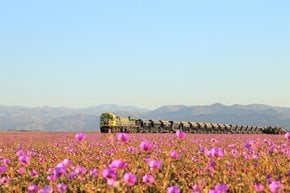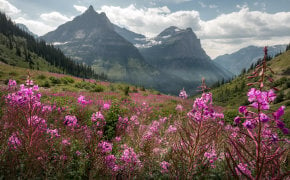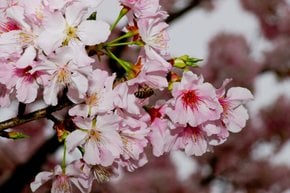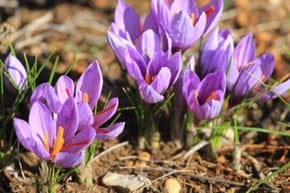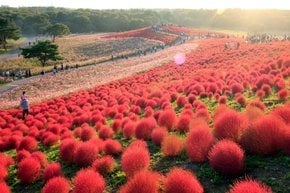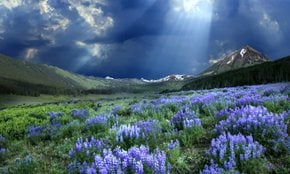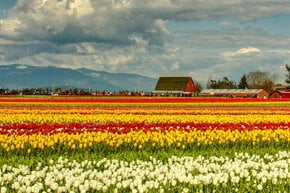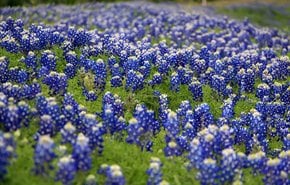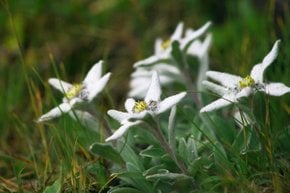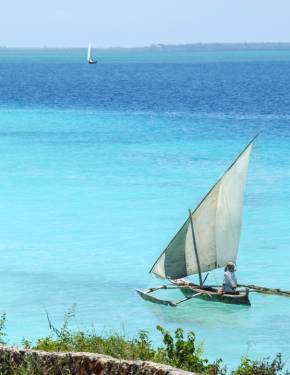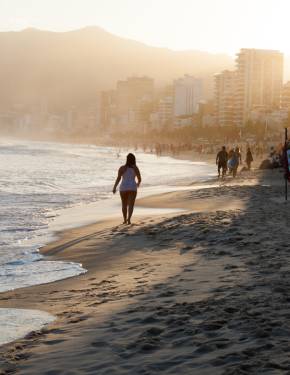Namaqualand Flowers in South Africa 2026
The only site in the whole world where a vast dry area annually transforms into a lush orange flowerbed, but only for a few short weeks
Best time: early August–mid-September
Namaqualand, located in the Northern Cape province of South Africa, is renowned for its stunning seasonal wildflower displays that transform the arid landscape into a vibrant tapestry of color each spring. This natural phenomenon attracts tourists and botanists from around the world, eager to witness one of nature's most spectacular displays.
Geography and Climate
Namaqualand is part of the Nama Karoo biome, characterized by its semi-desert conditions. The region extends along the Atlantic coast and includes both coastal and inland areas. The climate is arid, with hot, dry summers and mild winters. Normally, it's a rare occasion to find a desert abloom. Arid areas transform into flowering gardens only once in quite a long while. But not in Namaqualand (or Namakwaland in Afrikaans)—this region is the world's unique exception, flourishing every spring. With just 150 mm of rain per year, this large arid area transforms into a lush, flowering field.
Best Time to View Namaqualand Flowers
The Namaqualand flower season is relatively short: it usually begins in the second week of August and is over by the second week of September, yet it varies from year to year, depending on the amount of rain and temperatures. Also, flower season depends on the location: the further north, the earlier the blooming starts.
The flowers open up in the morning and close in the afternoon, at about 4 pm. So you have to get up early not to miss the orange nature show. Generally, local tour operators suggest arriving with an attitude of acceptance as the flowers are elusive and might not be as abundant as one expects.
Flora Diversity
From a distance, it might appear as though the area is blanketed with uniform orange daisies. However, upon closer inspection, an endless variety of flowers is revealed. The area is particularly known for its daisy family (Asteraceae), which dominates the landscape during the flowering season. The daisies themselves come in various shapes and shades of orange, and other rare flowers, such as lilies, aloes, and perennial herbs, also emerge among the dominant daisies. Namaqualand boasts a remarkable diversity of plant species, many of which are endemic to the region. Over 3,500 plant species have been recorded, with nearly a third of these found nowhere else on Earth.
Tourist Attractions and Activities
The Namaqualand flower season is a major tourist attraction. Visitors can explore the region via various routes and trails, each offering unique views and experiences. Popular destinations include Namaqua National Park, Goegap Nature Reserve and Skilpad Wildflower Reserve.
The local economy thrives on tourism centered around the flowering desert, leading to a common misconception that the keepers plant the flowers themselves to attract tourists and sustain their business. In reality, the stunning floral displays are entirely natural, thanks to bees and other insects that excel in their pollinating duties. Each year, the region showcases a different array of flowers, creating a sense of intrigue and surprise even for the park keepers.
Namaqualand Flower Route
The Namaqualand Flower Route is a stretch of about 500 mi (800 km) that connects cities and national parks, taking visitors through South Africa’s most impressive wildflower displays. The Namaqualand Flower Route runs some five hours north of Cape Town. The top flower areas are scattered around the towns of Garies, Springbok, and Port Nolloth, along the N7 route.
Namaqualand Tours
One of the most popular options is a car rental combined with local tour operator recommendations and accommodation reservation. Opting for a self-drive adventure provides the freedom to explore at your own pace. Another option is a private flower tour for about five days. These tours usually gather small groups of like-minded enthusiasts led by a knowledgeable guide. It takes some stress off from the planning and gives a chance to find the best flower-viewing spots.
Namaqua National Park Daily Conservation Fees
Entrance fees to the Namaqua National Park vary depending on citizenship status, with South African citizens and residents enjoying discounted rates. For international visitors, the entrance fee is higher but still accessible. International (non-South African) citizens, adults aged 12 years and above, are charged 110 South African Rand, while for children aged 2 to 11 years, the fee is 55 South African Rand. These fees contribute to the preservation of the park's natural beauty and biodiversity, ensuring that future generations can continue to enjoy this remarkable destination.
Practical Tips for Visitors
Planning ahead is essential for a seamless Namaqualand experience. Checking weather forecasts helps ensure optimal viewing conditions, while booking accommodations and tours in advance is recommended due to high demand. When planning a road trip, start your journey up north and then make your way to Cape Town. In case you missed the peak blooming in Namaqualand in mid-August, you might consider heading to Cederberg in late August or West Coast in early September.
Namaqualand Flower Festival (September 6-8)
As a bonus, the Namaqualand Flower Festival offers an annual gathering, where the love for the region’s stunning blooms and the joy of communal festivities come alive. The festival promises a wholesome weekend filled with yoga, dancing, singing, and exploring the trails amidst the breathtaking floral landscape.
Namaqualand Accommodation
After a long day of exploring the Namaqualand Flower Route, there are numerous charming towns where you can rest. Port Nolloth is particularly recommended, as it provides convenient access to Richtersveld National Park, located near the Namibian border, with its diverse fauna and flora.
The Namaqualand region offers a wide array of accommodations to suit various preferences. Options include self-catering beach cottages, guesthouses with ocean-view patios and terraces, and cozy beach houses. For a truly unique experience, consider staying overnight at Namaqua Flower Beach Camp or Skilpad Flower Camp, where you can enjoy vast landscapes adorned with wildflowers and breathtaking starry skies.







